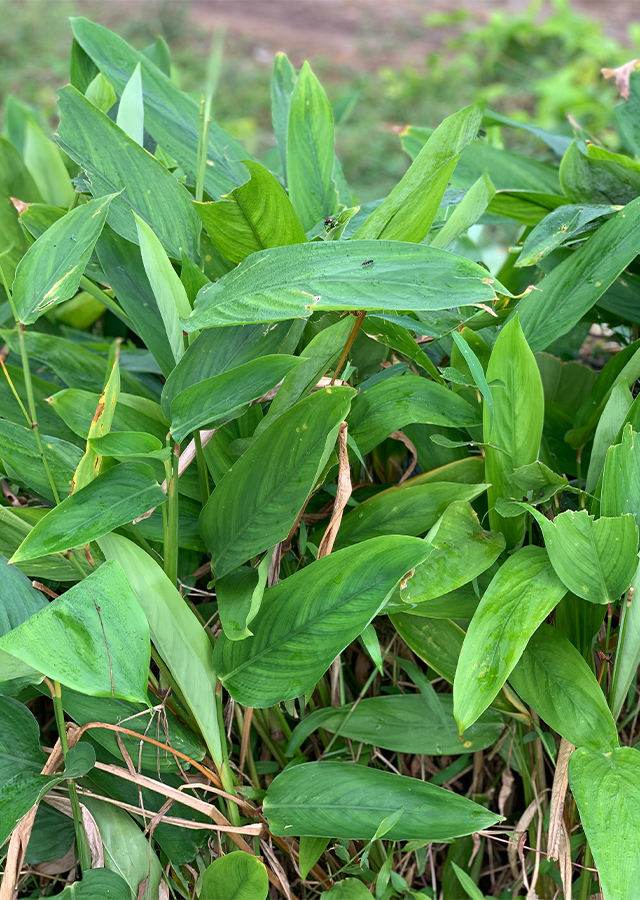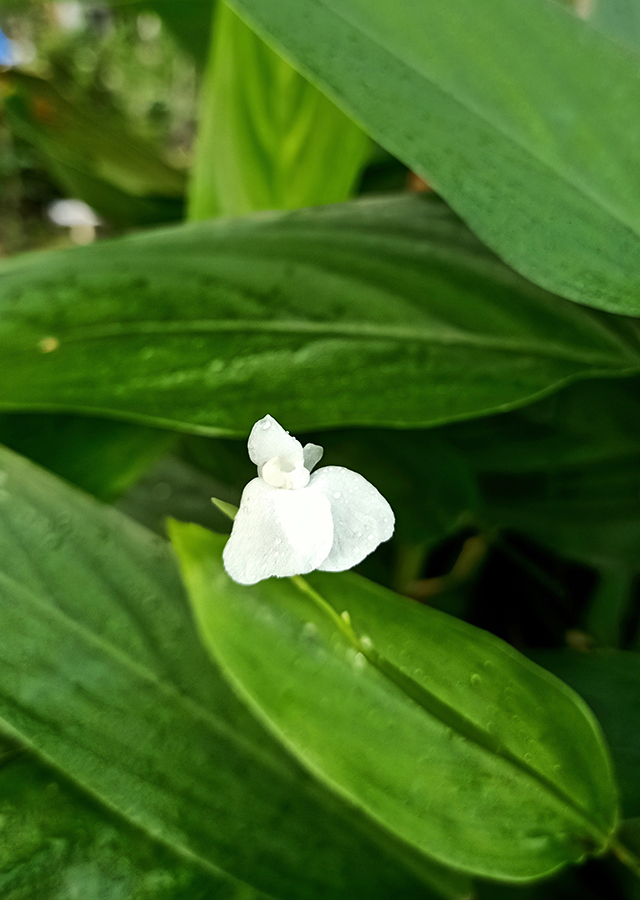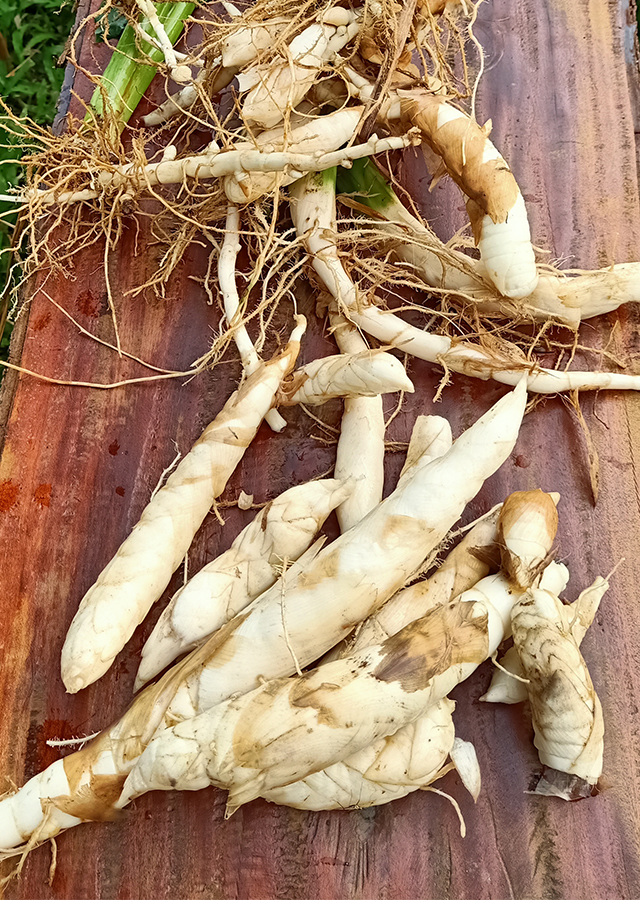Arrowroot
Maranta arundinacea L.
Marantaceae
Location in our garden
Principal



Synonym
Maranta indica Tussac
Maranta ramosissima Wall.
Maranta sylvatica Roscoe ex Sm.
Habitus
Herbaceous. Perennial, erect herb, 0.5-1.5 m tall, shallow-rooted
Part Used
Leaves
Rhizome
Growing Requirements
Full Sunshine
Need Shade
High Rainfall
Habitat
Riverbanks
Forest
Roadside
Overview
The exact origin of arrowroot is not known but it is indigenous in Central America (including the Caribbean area) and northern South America with exclaves in western Ecuador and in some of the interior Guiana savannas. In South-East Asia, it can be found cultivated everywhere. The plant produces a starch-rich root.
Vernacular Names
Arrowroot, Garut (Indonesia), Ararut (Malaysia), Zhu yu (Chinese), Kuzuukon (Japanese), Pfeilwurz (German), Dong củ (Vietnamese), Arrowroot des Antilles (French), Pijl wortel (Dutch), Ararú (Spanish), Maranta trostnikovaia (Russian), Agutiguepa (Portuguese)
Agroecology
The plant grows best under warm humid conditions, preferring temperatures of 25-30 °C and requiring an annual average rainfall of 1,500-2,000 mm or more, but with 1-2 dry months. Arrowroot tolerates up to 50% shading without notable yield reduction, and survives waterlogging and saturated soil conditions but does not produce storage rhizomes under such circumstances. It prefers lowland conditions, but can be cultivated up to 1,000 m altitude. It can also be grown on many soil types but thrives on rich, loose, sandy loams with pH of 5-8.
Morphology
- Rhizomes - fleshy, cylindrical, 5-40 cm × 2-5 cm, white or reddish, covered with overlapping, persistent or deciduous, brownish-white scale leaves.
- Stems - thin, usually much forked towards the apex.
- Leaves - radical and cauline, distichous; petiole terete, sheathing at the base, with a thickened, glabrous to sparsely hairy pulvinus at the apex, in upper leaves petiole often absent, green or sometimes variously streaked white or brownish-purp.
- Flowers - bisexual, zygomorphic, about 2 cm long, with 3 green, free, persistent, lanceolate sepals 12-16(-18) mm long, and a white, 3-lobed.
- Fruits - ovoid-oblong, about 7 mm long, berry-like, leathery, brown, glabrous to hairy
- Seeds - 3-sided, scabrous, pinkish, with yellow, 2-lobed, basal aril.
Cultivation
Propagated vegetatively from rhizome apices ("bits") about 2-4 nodes long and not too thin. The rhizomes mature about 300-365 days after planting.
Chemical Constituents
Phenolic compounds, flavonoids, alkaloids, tannins, glycosides, steroids, phenols, cardiac glycosides, saponins, carbohydrate.
Traditional Medicinal Uses
- Studies have suggested antimicrobial, immunomodulatory, antioxidant properties.
- The rhizome is considered an aphrodisiac.
- Starch is considered to cure stomach problems, food poisons, anti-inflammatory, demulcent, sedative, and digestive.
- Starch is used as a soothing application for various skin problems: erysipelas, sunburn, wasp stings, dermatitis, and gangrene.
- In the West Indies, roots are used for poulticing poisoned and other wounds. Mashed roots as plaster are applied to areas of insect stings and spider bites.
- In the Caribbean, pounded leaves are used as a teething aid.
- In Trinidad, it is used as an anti-inflammatory skin poultice.
- In Malaysia, root decoction is used for burning stomach complaints after delivery.
Part Used
Reference Sources
- Stuartxchange. (2016). Philippine Medicinal Plants. Araro. http://www.stuartxchange.org/Araro.html 22-02-2021
- CABI. (No date). Invasive Species Compendium. Maranta arundinacea (arrowroot). https://www.cabi.org/isc/datasheet/32455#tosummaryOfInvasiveness 22-02-2021.
- Villamayor Jr, F.G. & Jukema, J. (2018). Pl@ntUse. Maranta arundinacea (PROSEA). https://uses.plantnet-project.org/en/Maranta_arundinacea_(PROSEA) 22-02-2021.
- Fern, Ken. (2014). Useful Tropical Plants. Maranta arundinacea. http://tropical.theferns.info/viewtropical.php?id=Maranta+arundinacea 22-02-2021.

